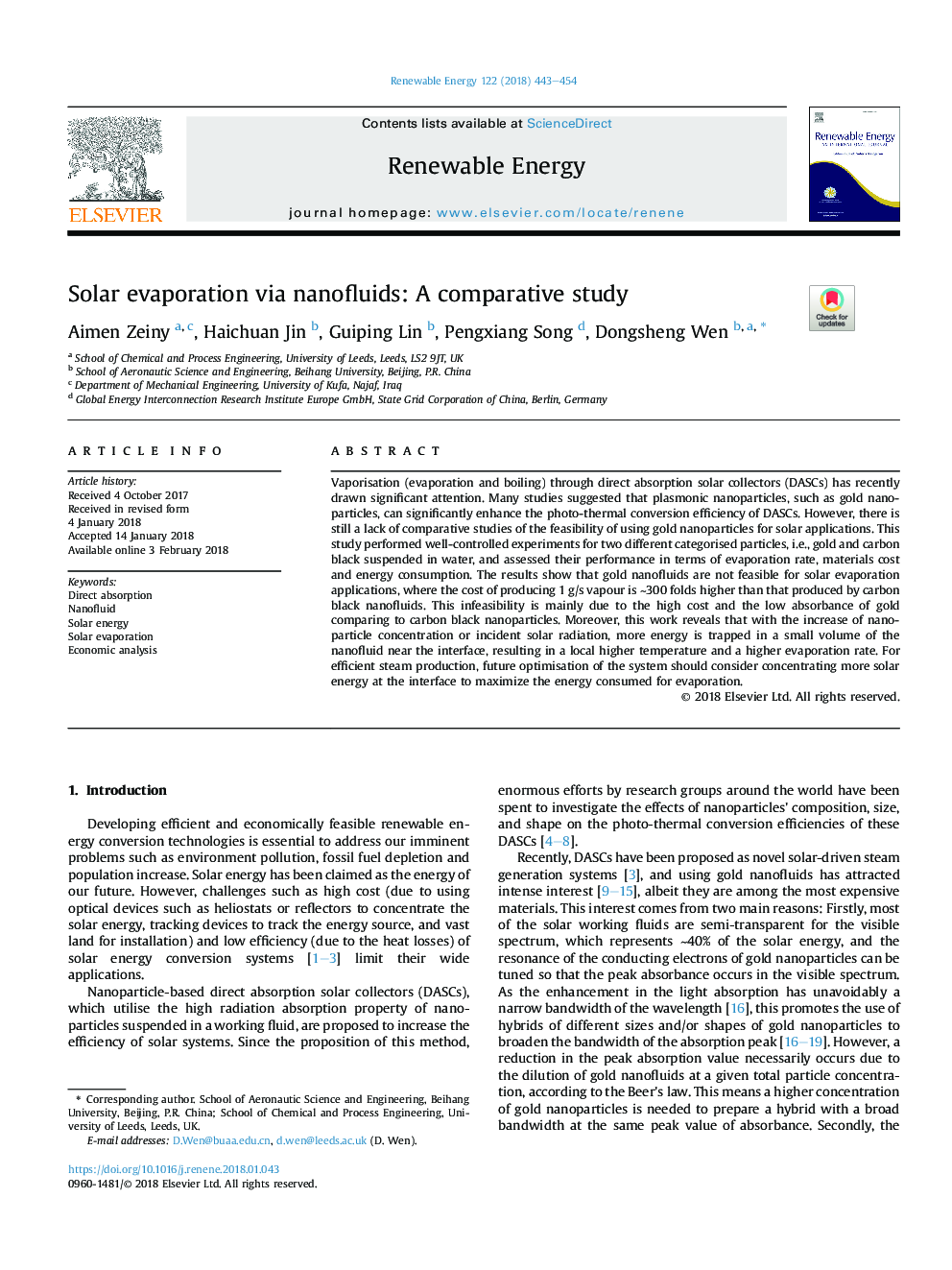| کد مقاله | کد نشریه | سال انتشار | مقاله انگلیسی | نسخه تمام متن |
|---|---|---|---|---|
| 6764719 | 1431582 | 2018 | 12 صفحه PDF | دانلود رایگان |
عنوان انگلیسی مقاله ISI
Solar evaporation via nanofluids: A comparative study
ترجمه فارسی عنوان
تبخیر خورشیدی از طریق نانوفیلد ها: یک مطالعه مقایسه ای
دانلود مقاله + سفارش ترجمه
دانلود مقاله ISI انگلیسی
رایگان برای ایرانیان
کلمات کلیدی
جذب مستقیم، نانو سیال، انرژی خورشیدی، تبخیر خورشیدی، تحلیل اقتصادی،
موضوعات مرتبط
مهندسی و علوم پایه
مهندسی انرژی
انرژی های تجدید پذیر، توسعه پایدار و محیط زیست
چکیده انگلیسی
Vaporisation (evaporation and boiling) through direct absorption solar collectors (DASCs) has recently drawn significant attention. Many studies suggested that plasmonic nanoparticles, such as gold nanoparticles, can significantly enhance the photo-thermal conversion efficiency of DASCs. However, there is still a lack of comparative studies of the feasibility of using gold nanoparticles for solar applications. This study performed well-controlled experiments for two different categorised particles, i.e., gold and carbon black suspended in water, and assessed their performance in terms of evaporation rate, materials cost and energy consumption. The results show that gold nanofluids are not feasible for solar evaporation applications, where the cost of producing 1â¯g/s vapour is â¼300 folds higher than that produced by carbon black nanofluids. This infeasibility is mainly due to the high cost and the low absorbance of gold comparing to carbon black nanoparticles. Moreover, this work reveals that with the increase of nanoparticle concentration or incident solar radiation, more energy is trapped in a small volume of the nanofluid near the interface, resulting in a local higher temperature and a higher evaporation rate. For efficient steam production, future optimisation of the system should consider concentrating more solar energy at the interface to maximize the energy consumed for evaporation.
ناشر
Database: Elsevier - ScienceDirect (ساینس دایرکت)
Journal: Renewable Energy - Volume 122, July 2018, Pages 443-454
Journal: Renewable Energy - Volume 122, July 2018, Pages 443-454
نویسندگان
Aimen Zeiny, Haichuan Jin, Guiping Lin, Pengxiang Song, Dongsheng Wen,
